- Designazione:
- EUR
- Gruppo:
- Shorthair
- Categoria:
- Principale
- Origine :
- United Kingdom , Germany
The origin of the breed
A breed from Central Europe, developed solemnly for aesthetic purposes. Modern european shorthair originate from common homepets. While making a new breed, fanciers were striving to concrete their utility, while cutting their strive towards wandering the streets and generally making them more emotionally stable. To achieve this, homecats were crossed with persian and, particularly in France, with Chartreuse. Contemporary british celtics were blue, and germans were mostly breeding silver and white. The breeding process begun in early 20th century, and the first standard is dated 1925. Even despite that, FIFe has given it's official acclaim as late as in 1982, and they were treating celts as british shorthair ever before. According to WCF standard, the “Celtic" in breed's name pinpoints their historical origin.
Appearance
Typically a large feline (males weight nearing 20 lbs), that resembles an elongated and somewhat more lean british shorthair.
Head: Rather broad, with rounded contours, slightly longer than broad. Forehead and skull are slightly rounded. Cheeks are well developed, especially in adult males. Nose (WCF, FIFe) is straight, of medium length and equally broad in entire length.
(FIFe) Transition between nose and forehead is marked by shallow indentation between the eyes.
(WCF) Profile is clearly curved.
Chin is strong, rounded. Muzzle is well determined, with rounded contours.
Eyes: Big, rounded and open, set wide and slightly oblique. Clear and pure color, which harmonized with the body color. Often met colors are gold and amber.
Ears: Medium in size, slightly rounded at the tips, might be tufted. Set wide and almost upright. Ears are as high as their width at the base.
Neck: Of medium length, muscular.
Torso: From medium to large size, robust, strong and muscular. Not cobby, very lithe. Rib cage is rounded and well developed.
Legs: Strong, solid, of medium length. Evenly narrowing to paws.
Paws: Compact, rounded, firm.
Tail: Of medium length, rather broad at the base, tapering to a rounded tip.
Coat: Short, dense, firm, springy and glossy. Undercoat is moderate.
Colors: Any coat color variety is recognized (solid, silver, tabby, with white). Nor recognized colors are: chocolate, cinnamon, lilac and colorpoint.
Penalize: Any deviation from the standard. Too large and too cobby body; hanging jowl-pouches, “stop" at the profile line.
Disqualification on shows: Any signs of an outcross to other recognised breeds.
Disqualification for all breeds: Amputated claws, cryptorchism, deafness. Any bone deformation in the head, body, limbs.
Character traits and features
European shorthair and Celtic shorthair in particular behaves like a normal cat. It is a rather pleasant cat for it is active, curious, playful, sociable and tender, yet is sufficiently efficient on alone yet easy with other pets. In comparison with stray cats, this one is more adequate and responsive, less drawn towards going astray while being adaptive to outdoors and saving mouser skills.
They are known for their good health and resistance to infection.
Maintenance and care
These cats are a breeze to look after, as if their coat looks nice while being periodically brushed. During the heat season, however, their coat may require additional attention.
Nutrition choices
Balanced nutritions are preferred.
Selection and breeding
Allowed crossings: none.
Breeds relative or derived from Celtic Shorthair: none
Alternative and obsolete breed names
Celtic Shorthair (WCF)
European Shorthair (FIFe)
